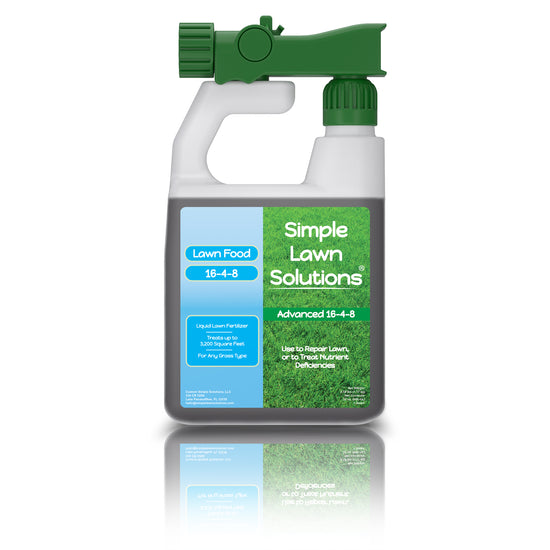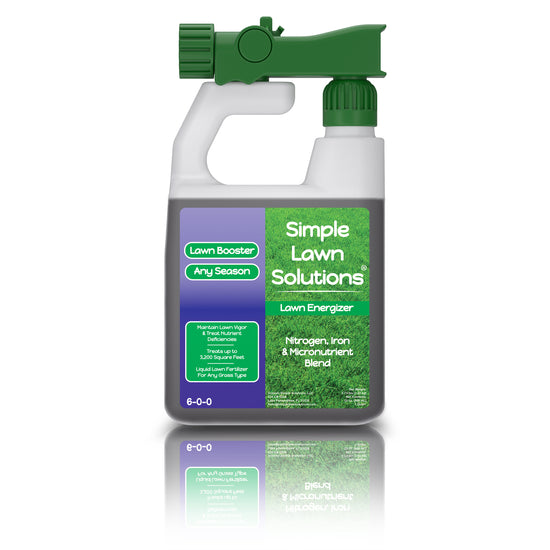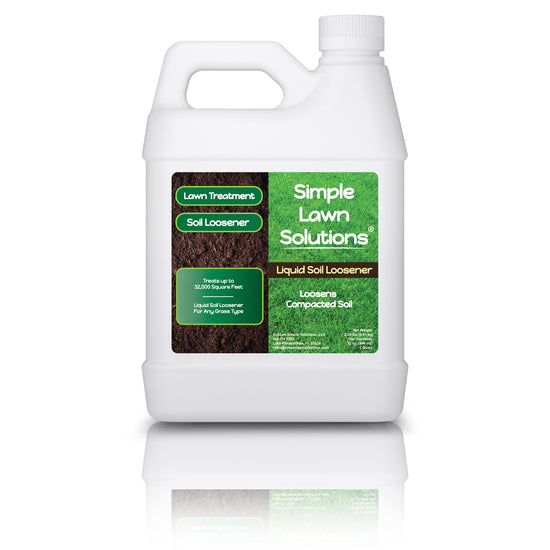To Sod, or Not To Sod?
There may come a time in the life of your lawn, either during establishment or renovation, that the question is asked, do I sod or do I not sod? There are advantages and disadvantages to both decisions. Sodding is one of the fastest and most effective ways to establish a lush, green lawn. Compared to seeding, sod provides instant results, erosion control, and a weed-free lawn. Unlike seeding, which takes weeks to establish, sod provides an instant, mature-looking lawn.
While new sod requires 2–3 weeks to root, it can handle light foot traffic within 7–10 days. High-quality sod is grown in controlled farms, making it weed-free at installation, having no bare spots or patchy areas, which are familiar with seeding. Sodding reduces competition from invasive weeds, leading to a healthier lawn long-term.

Sod Helps with Erosion Control
Sod acts as a natural erosion barrier, making it ideal for sloped yards, hills, or areas prone to washouts. The dense root system of sod stabilizes soil much faster than grass seed, and once roots establish, sod anchors the soil, preventing erosion from wind and water movement. Ground that is left bare tends to erode more and can have an increase in weed population if not treated. Sodding provides instant ground cover, stabilizing the soil and preventing runoff, washouts, and sediment loss caused by wind and water.
In contrast, grass seed takes 6–12 weeks to develop strong roots, leaving soil vulnerable during early growth. Sod creates a thick, living mat that absorbs water, reducing runoff and slowing down water movement. It also absorbs rainfall better than bare soil, decreasing the risk of puddling, soil displacement, and sediment loss. This makes sod ideal for new construction sites where topsoil is often loose or compacted, making erosion more likely. The established root structure developed with sod, helps loosen compacted soil, improving drainage over time. For heavy erosion areas, use deep-rooted sod types like Tall Fescue or Zoysia Grass.
Stronger & More Mature Grass
Sod farms grow turfgrass under ideal conditions for 12–18 months before harvesting, but proper care before, during, and after installation is crucial for strong, long-lasting turf. This results in deeper root systems and thicker, healthier blades than new grass seedlings. Sod can handle heat, drought, and foot traffic better than young grass grown from seed.
First, select the right grass type for your climate and lawn use. Cool-season grasses (Tall Fescue, Kentucky Bluegrass) are best for northern & transition zones. Warm-season grasses (Bermudagrass, Zoysiagrass, St. Augustine) are best for southern regions, while shade-tolerant options are Fine Fescues, St. Augustine ‘Seville.’ The underside of the sod should have dense, white roots; avoid sod with thin or weak roots, as it may struggle to establish.
A healthy sod roll should be evenly green with no yellow or brown patches, and grass blades should be dense and upright, not wilted or limp. Sod should be about 1 inch thick, including soil and root layer and should be installed within 24–48 hours of cutting for best results. Confirming sod harvesting date with the sod farm will further prepare for proper installation time frame.

For best sod installation results, till & loosen the top 4–6 inches of soil for better root penetration and level the ground to prevent drainage issues. Use a balanced starter fertilizer such as Simple Lawn Solutions Growth Booster or Soil Hume to encourage root growth, but avoid high-nitrogen fertilizers until the sod is fully established. Apply topdressing compost or organic material to boost microbial activity in the soil. Lay sod immediately after delivery if possible since sod dries out quickly, and installation should be performed within 24 hours to prevent stress.
For the best final product, stagger sod pieces in a brick pattern to avoid visible seams. Once sod is laid, soak the sod until water penetrates 4–6 inches deep and continue watering daily for the first 2 weeks to promote root establishment. Roll sod gently after installation to eliminate air pockets and improve root-to-soil contact and avoid heavy foot traffic for the first 2–3 weeks.

The Best Time for Sod Installation
Unlike seeding, which requires ideal temperatures, sod can be installed in spring, summer, or fall. The best results are in early fall or spring, but it can even be laid in summer with proper watering. Sod can be installed almost year-round because it is already mature, fully rooted grass grown on a farm before being harvested and transplanted. Unlike grass seed, which requires ideal growing conditions to establish, sod can adapt to various temperatures and soil conditions, making it an effective solution in most seasons. Sod’s strong root system allows it to establish itself faster than seed. Since sod is mature grass, it avoids the lengthy germination and seedling stage, where grass is most vulnerable. Even in cooler or hotter months, sod can survive as long as it’s adequately watered.
Spring is the best time for sod installation, with warm soil helping roots establish quickly, and regular spring rain reducing watering needs. Cooler temperatures also prevent heat stress, making it ideal for sod growth. Summer requires more water, but is still an effective time for sod installation. Warm soil promotes rapid root growth and daily watering for the first 2 weeks is required to prevent drying out. Install sod in the early morning or late afternoon to avoid heat stress.

Fall is the second best time to install sod, as the cooler temperatures reduce heat stress on new sod but still have enough warmth for roots to establish before winter. There is also less competition from weeds compared to spring and summer. Winter, dormant sodding can be performed in milder climates but never installed when the ground is frozen. It stays dormant but will establish roots once temperatures rise. It helps prevent soil erosion in bare areas during winter months.
Sodding is a Faster, Lower Maintenance Way to Get a Gorgeous Lawn
Sodding is a faster, lower-maintenance way to establish a lawn compared to seeding. Since sod is mature, pre-grown grass, it eliminates many of the challenges associated with growing grass from seed, such as long germination times, erosion issues, and frequent overseeding. Sod provides an instant, lush lawn upon installation, unlike seeding, which takes 6–12 weeks to establish. There is no need to wait for grass seed to sprout, fill in, or compete with weeds. Sod is usable sooner for light foot traffic and is safe within 1–2 weeks, while seeded lawns take months to handle activity. Seeding requires waiting for ideal weather and extended maintenance to ensure germination while sod is ready to grow immediately.
Seeding requires daily watering for 3–6 weeks to prevent seed drying out, while sod only needs intensive watering for the first 2–3 weeks, then transitions to a regular watering schedule. Sod retains moisture better than bare soil, reducing the risk of dry patches. Seeding demands long-term irrigation, while sod needs just a few weeks of frequent watering to establish. Thick, dense sod immediately covers the soil, preventing weeds from taking root. Seeding leaves bare spots that weeds can invade, requiring the need for constant weeding or herbicide use. High-quality sod is typically grown in controlled environments with minimal weed contamination. Less time spent pulling weeds or applying herbicides means easier maintenance!
Post-Installation Care for New Sod
Once the sod has been installed, adjust the watering schedule after 2 weeks. Once roots are established, watering should be reduced to every other day. Watering should be performed deeply but infrequently after 4–6 weeks to promote profound root growth. Mowing can initiate when the grass reaches 3–4 inches tall or typically 2–3 weeks after installation, while never cutting more than ⅓ of the grass height at a time. Apply a slow-release fertilizer such as Simple Lawn Solutions 16-4-8 or 15-0-15 to encourage steady growth. Healthy sod should naturally suppress weeds but hand-pull any that appear. Keep an eye out for grubs or sod webworms, and treat only if necessary.
May Improve Perceived Property Value
A freshly sodded lawn instantly enhances curb appeal, making it ideal for selling a home or improving landscape aesthetics quickly. Sodding is one of the fastest and most effective ways to boost curb appeal and property value. A lush, green lawn enhances the aesthetic appeal of a home, making it more attractive to buyers, appraisers, and real estate agents. Since sod provides an instant, mature lawn, it increases property value much faster than seeding, which can take months to establish.
A fresh, green lawn makes a home look well-maintained and more inviting. First impressions matter; buyers are more likely to pay top dollar for a home with excellent curb appeal. Appraisers also consider landscaping quality when evaluating property value, and sodded lawns can add thousands to a home’s resale price. Studies show that a well-landscaped home can increase property value by 10-15%.
Sod creates an instant lawn, while seeded grass takes 6–12 months to reach full maturity. With sod, there is no patchy, uneven growth- it provides a uniform, professional look, which makes it perfect for real estate listings, open houses, or selling a home quickly. Homeowners who need to boost property value fast should choose sod over seed.
Real estate professionals estimate that landscaping can return 100-200% of the investment at resale. A green, healthy lawn makes a home look move-in ready, eliminating concerns about landscaping costs for buyers. New homeowners may prefer sod and the low maintenance required. A mature sod lawn looks professionally installed, enhancing the perceived value of the home.

Final Verdict
Sod has a mature root system that establishes faster than seed. It can be laid in spring, summer, fall, or even winter if the ground isn’t frozen. Watering is the key factor in sod survival, while seasonal adjustments are needed. Sod gives instant curb appeal because the home looks well-maintained & move-in ready. A fully mature sodded lawn prevents erosion, drainage issues, and patchy growth.










1 comment
This article truly sheds light on the sod vs. seed debate. The comparison between the instant results of sod and the patience required for seeding was particularly insightful. It’s clear that choosing sod can be a game-changer for homeowners seeking a lush lawn without the long wait. Thanks for providing such valuable information!